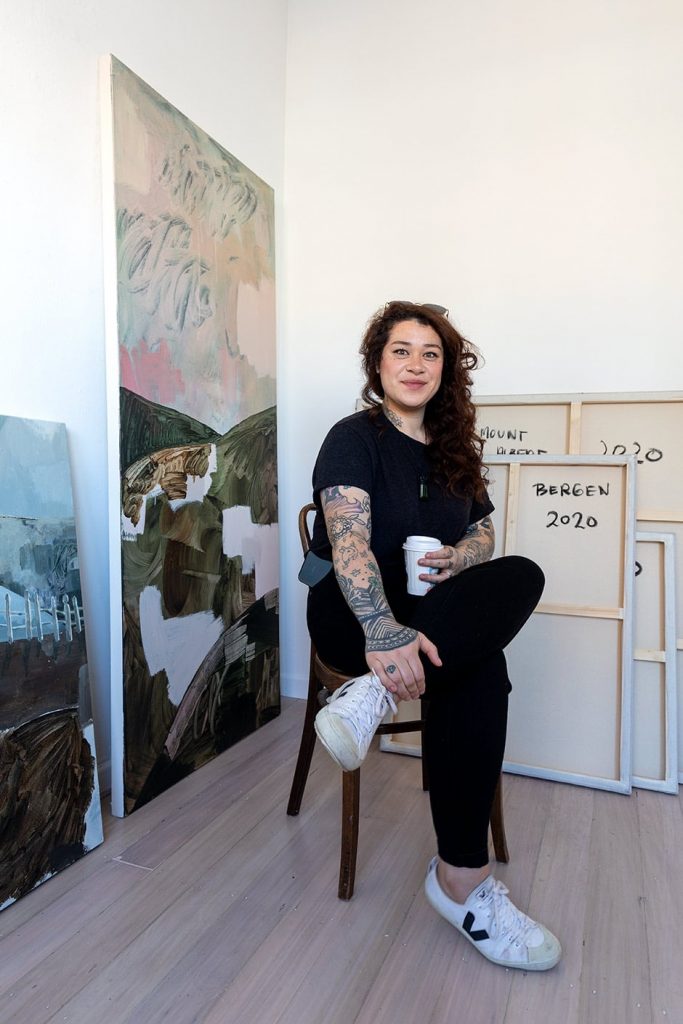Repped by McLeavey Gallery, the painter explores colour, memory, pop culture and history on canvas.
Since graduating from Whitecliffe in 2018 with a Master of Fine Arts, mum-of-one Christina Pataialii has been flat tack, making works and showing throughout Aotearoa. Last year, she travelled to Europe to take up a residency at London’s Gasworks, and earlier this year she announced her first gallery representation in New Zealand with Wellington’s McLeavey Gallery, where she has an upcoming exhibition.
So, Christina, how has your aesthetic evolved? I think the changes have been most obvious in my move from material to pictorial interests, but these two aspects move back and forwards. I’ve been really interested in colour as a signifier and am exploring the way it relates to memory, and the notion of imagined memory. The works for me are still experimental, which is how I like them to be, to keep my enquiries open. I’ve also been thinking about smaller-scale works and large-scale paintings; I’m always considering the way my works are viewed or presented, whether I’m working on canvas or off.
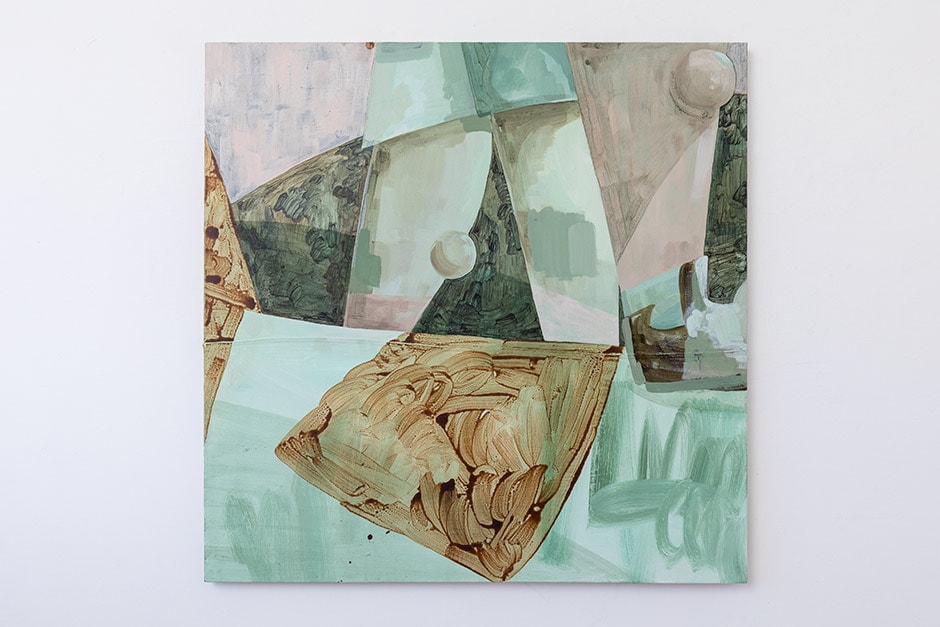
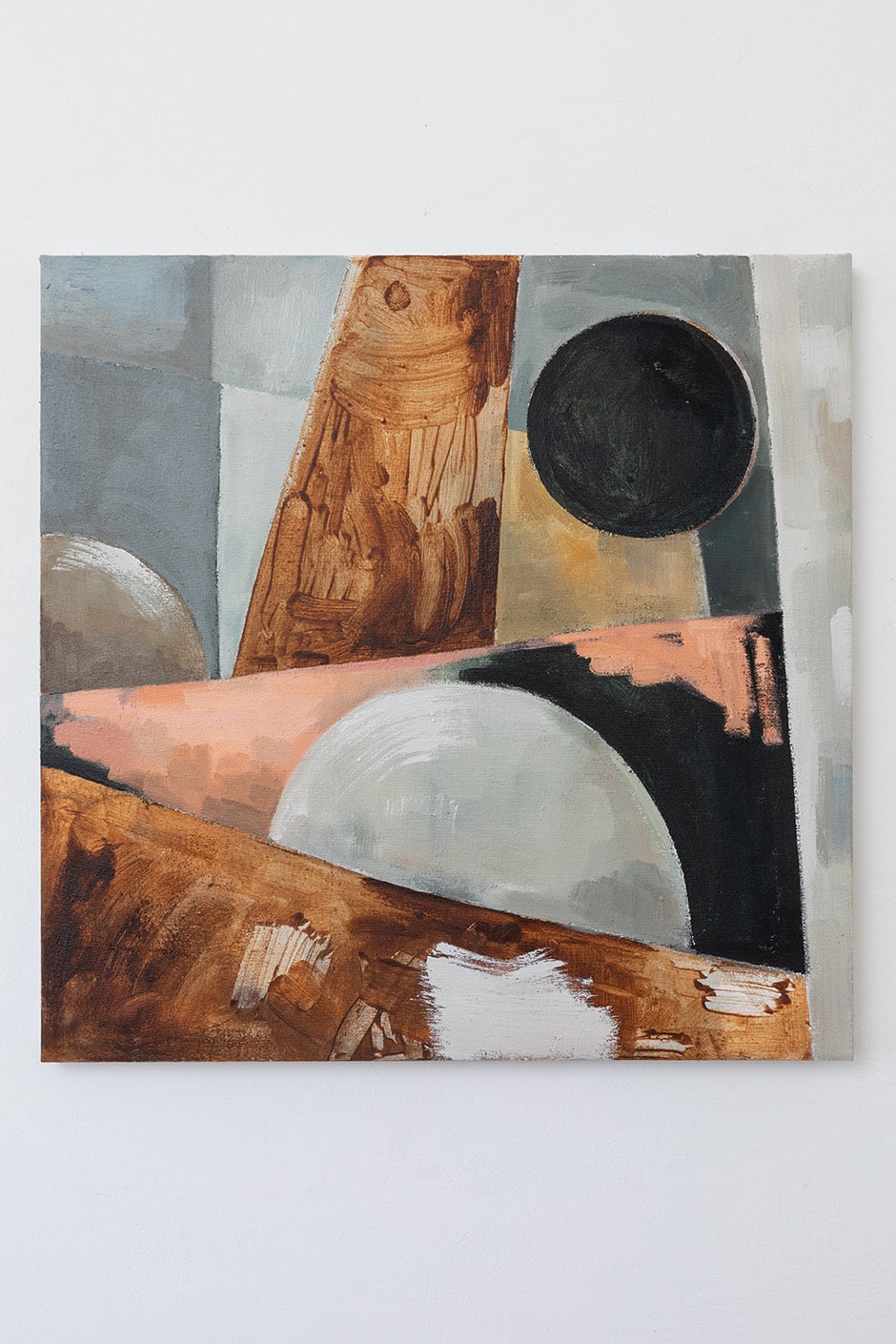
How do history, nostalgia and pop culture inform your work? I’ve always had an interest in history and people. From a young age I had a curiosity about how we perceive the world and was aware of gaps in the representation of ‘who we are’. I often look back at my own trajectory as a way to open up and point to some of the questions I have around being in and seeing the world. I’ve long been interested in challenging the idea of a single narrative and questioning what’s beyond these ideas. In recent years, I’ve been looking at geopolitical redefinition of national identity and a move towards turning inwards. I’m really interested in the tension between where we are and where we’re going, and the romanticism of a past so few of us can speak to.
I’m also interested in the way pop culture maps the trajectory of how people have related and responded to the time they exist in. For example, I often reference pop music from the ’50s to the ’70s; for me, these songs are very much attached to the working class and the job sites I grew up on as a kid, when I’d go to work with my father. I enjoy the way these references can trace moments in time and also transcend them in a way. They can attach themselves to a young Samoan man moving from Western Samoa to New Zealand in 1974 and a young man working in a factory somewhere in Manchester in 1974. For me, they’re attached to 1996, the smell of house paint and conversations between tradies about the way the country should be run.
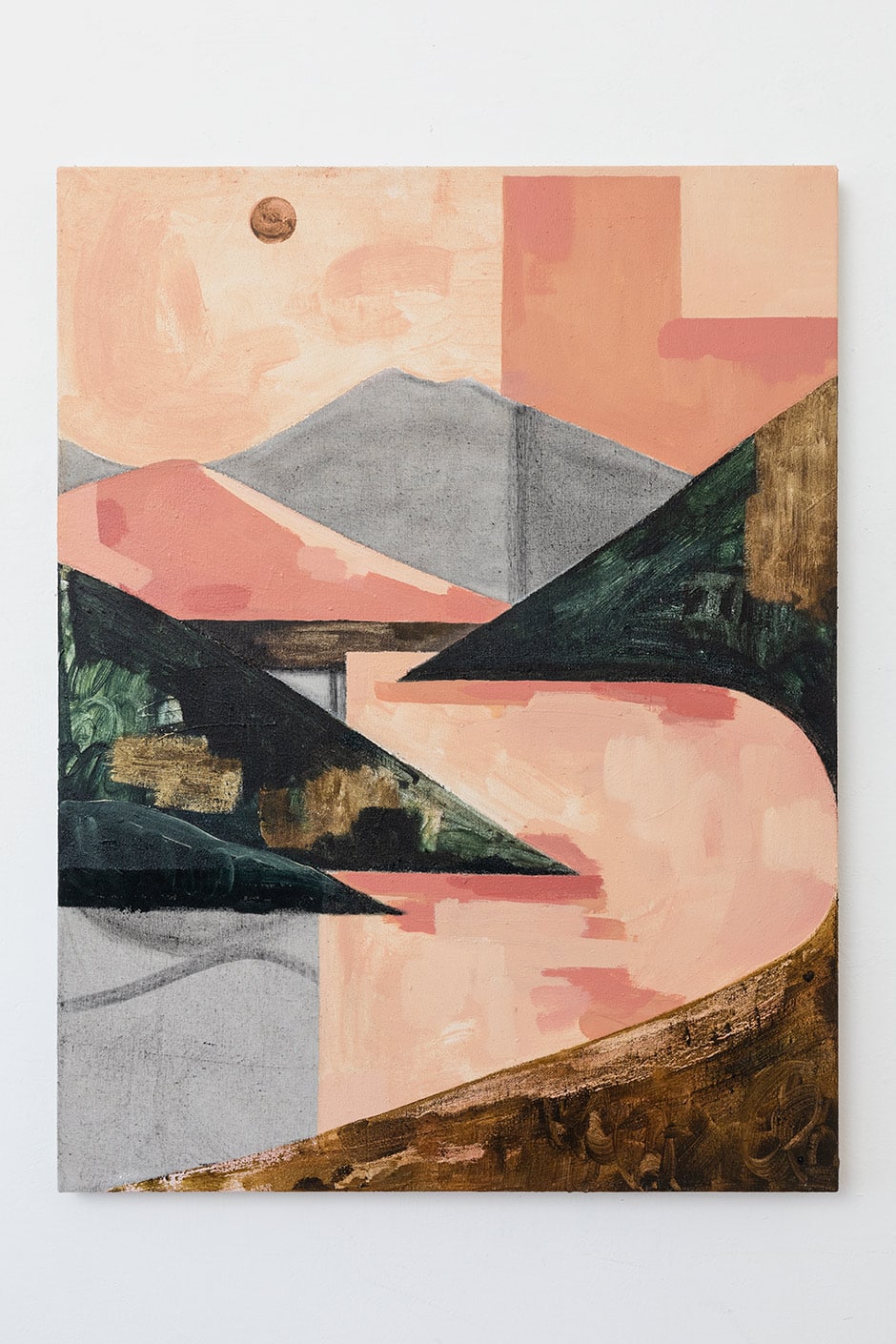
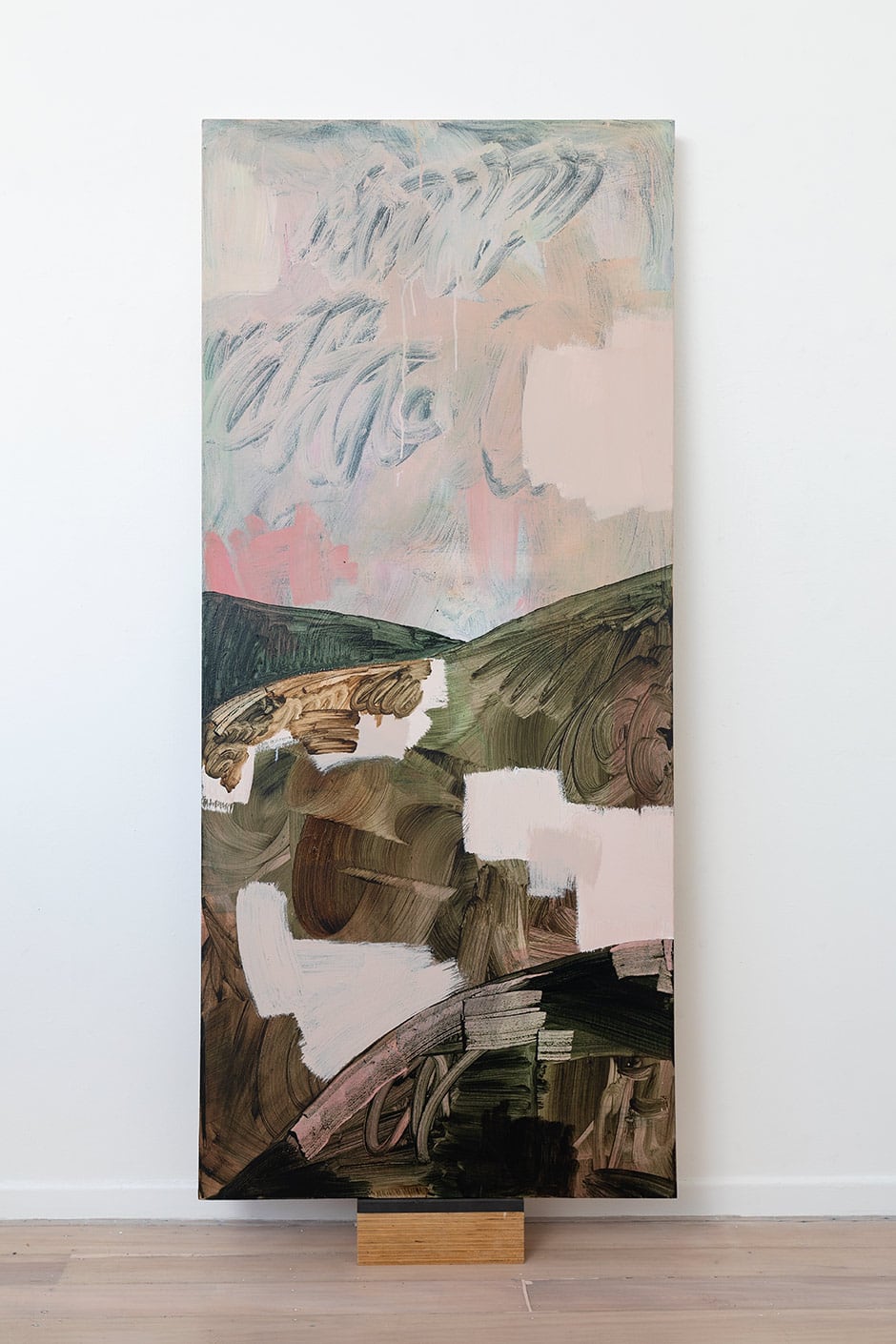
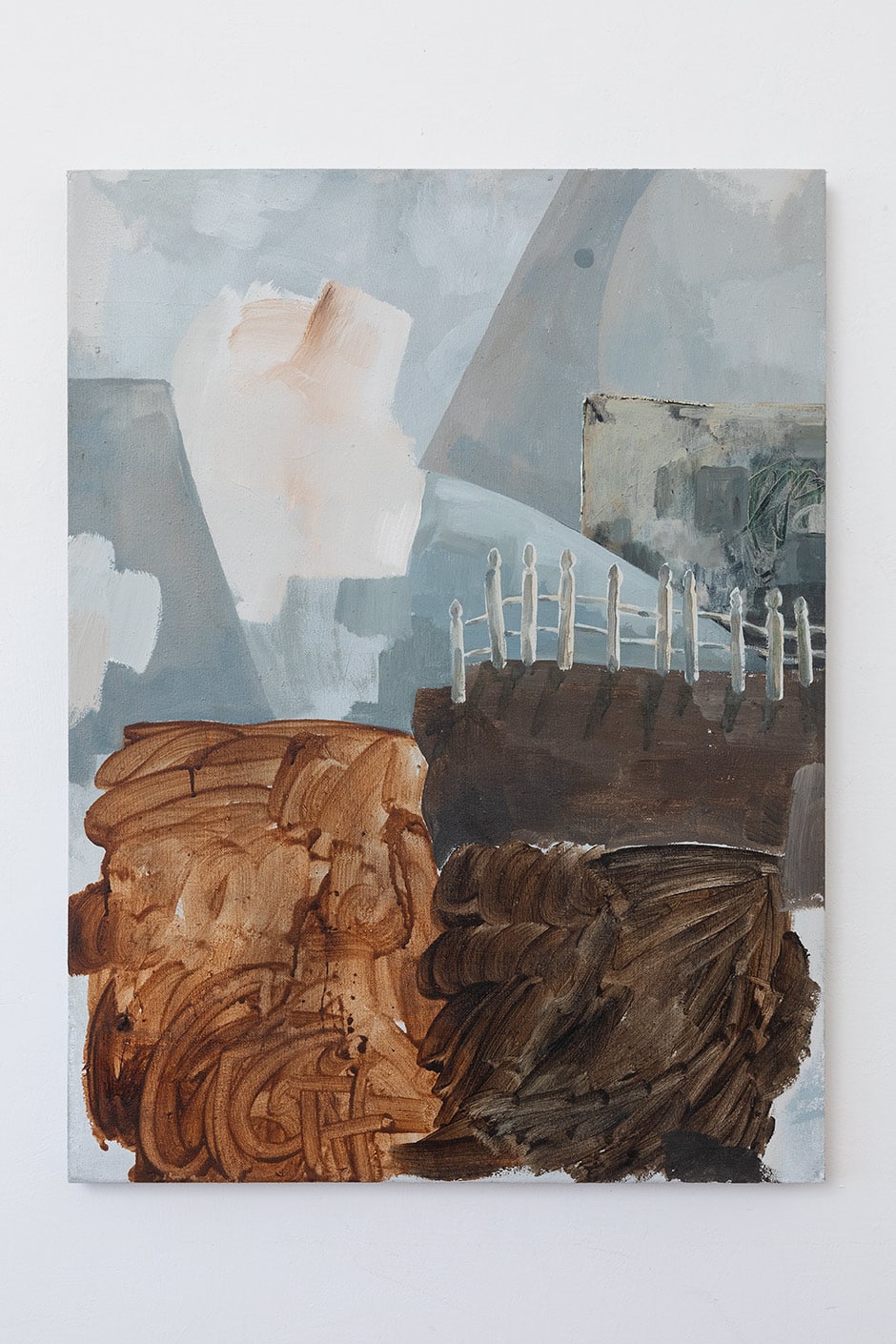
Can you talk us through your creative process? I don’t often plan paintings in the traditional sense, but take more of an experimental approach. I’m drawn to formal experimentation around composition, colour and mark making. Sometimes I’ll do sketches on paper, but for me that’s more quick compositional problem-solving or like jotting down thoughts. Sometimes these sketches are transferred to canvas, but I often start paintings by making marks, creating painterly problems to solve.
You recently collaborated with fashion label Maggie Marilyn on a print for an upcoming collection — how did that come about? They got in touch with me shortly before I left for London. The ideas behind the collection resonated with me and the opportunity to collaborate with other creators was something I’d been interested in for a while. It’s been a great experience and good to see painting operate in a different way from the traditional.
What’s your favourite time of day in the studio? I’ve become more of a morning than an evening person, which is probably down to age and having a 12-year-old child. However, when I’m in a good painting spot, it doesn’t really matter — I can find myself in the studio for 16 hours at a time if I’m really stuck in the problem-solving headspace.
Do you have a painting playlist or do you prefer to work in silence? I often listen to specific work playlists. Solid Gold FM classic hits get me into the right state of mind, but I work through playlists from many genres, attached to different times in my life. I also listen to audio books and have TV shows and movies on repeat in the background.
Does the motivation to paint come easily? I wish it did! Generally, ideas come easily but the motivation to paint doesn’t always. But I imagine that’s much like any job. christinapataialiiblog.wordpress.com
Interview Alice Lines
Photography Russell Kleyn

